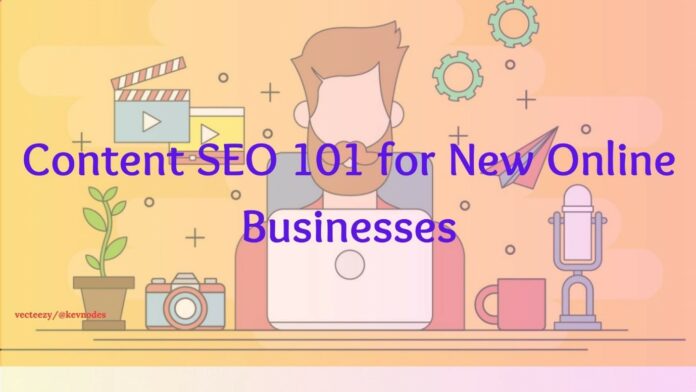
In the world of online marketplaces and retail sales going digital, there is simply no way around SEO. Search Engine Optimization or SEO is an indispensable part of the modern online business.
Not only does SEO improve your web visibility, but it also leaves a content trail that will boost your Expertise, Authority, and Trust (EAT) in the eyes of Google. In this quick article, we’re going to explore the world of SEO for small businesses and why it should matter to you. Let’s dive right in!
Basic SEO for Small Businesses
Search Engine Optimization is all about boosting your presence on search engines such as Google. Note that this is quite different from local SEO for small businesses, which is more about ranking for a specific location, for search results such as “near me”.
For local SEO, users can find content, products, or services that are near them, while general SEO boosts visibility everywhere.
So, what elements of basic SEO do you need to be familiar with for your small business to grow?
Incorporate Focus Keywords in Your Copy
The focus keyword makes you easily discoverable and should be something that helps your audience find you faster. For example, “essay writing service” is a long-tail focus keyword.
The focus keyword should be incorporated into your meta titles, meta descriptions, and your general web copy. It should also be incorporated into the site URL if there is one primary keyword you work with. That will improve your click-through rates.
You should also try to improve the placement of your focus keyword in the first 10% of the content to capture the site’s attention. The main keywords need to be optimized including the Keyword Density, its calculation, and its impact on site rankings. Remember not to use the focus keyword extensively to avoid penalties and maintain content quality.
Other Elements of Basic SEO
Here are a few other elements of basic SEO that you need to keep in mind even as you work on the most very basic level of SEO:
- URL length – This needs to be optimized to enhance the user experience and search-engine friendliness. For example, blog titles shouldn’t be more than 60 characters if possible. That will provide the optimal URL length.
- Internal links – The content such as blogs should be linked to other content on the website to help users easily find other resources.
- External links – DoFollow external links are encouraged to improve credibility and enhance SEO.
- The right content length – Depending on the type of content that you are writing, you need to optimize the length. Blog length might typically be between 400 – 800 words for short-form content and 1000 – 2500 words for long-form content. A minimum of 600 words is usually recommended.
Let’s now take a look at a bit more advanced aspects of SEO that can help your content start ranking.
Advanced SEO and Schema
While basic SEO might get you to improve your rankings, they might not explicitly get you on Google page one. Depending on your objectives, you might want to optimize different parts of your website or content. Let’s take a look at some of these important aspects.
- The focus keyword should be included in different parts such as the subheadings, the introduction, and the conclusion. That will organize your content better. Additionally, it can be added to image alt attributes.
- Long-tail keywords should be used as part of the strategy. For an e-commerce store, the focus keyword can also be combined with the product. Long-tail keywords are highly specific and relate to a niche search query.
- For the title, the focus keyword should ideally be used at the start of the title. They can also be used in sub-headings to make them click-worthy. Numbers should also be used in titles since people are naturally drawn to titles.
- Multimedia elements such as images and videos can also be added to blog content for a richer user experience.
- Your blog content should be optimized using a Table of Contents type of plugin. Different apps such as Hemingway, Google Docs, and even Visual Studio support this.
Let’s dive a little into schema implementation.
Schema Implementation
If you have specific parts of your website or product that you want to optimize, you should implement schema markup. Schema refers to metadata snippets that you implement on your website’s HTML code to help Google find and index your content faster.
Schema helps Google display your important content as rich snippets. Internet users are more likely to click on search results with schema data rather than those without. Users will find the following types of content more suited for schema:
- Creative work such as photographs, art, books, etc. For example, for a book, you can add details such as “title” “ISBN”, “illustrator”, etc.
- Specific content – For example, if you have a specific webpage such as EssayWriter.org, you may want to schema this content if it is your pillar content.
- Events with a time and location
- Organization with a physical location
- Persons who use their names as keywords
- Places, such as restaurants, theme parks, music studios, etc.
- Products
With schema, your content that is very relevant and needs to get onto Google’s first page is highlighted. This makes your content and web pages more readable and friendly from a technical and non-technical perspective.
Besides these aspects of SEO, you may also want to optimize things like page load speed, and other page metadata and make your sites mobile-friendly.
Conclusion
That’s about it for this episode of SEO 101 for new and online b businesses. We’ve moved from basic SEO to the most advanced aspects of search optimization. Hopefully, you’ll be able to implement all these strategies to help your web content rank higher.
From keyword and title optimization to other on-page SEO aspects such as media elements and site metadata, you’ve got it covered. Good luck as you move your business to the next level!










